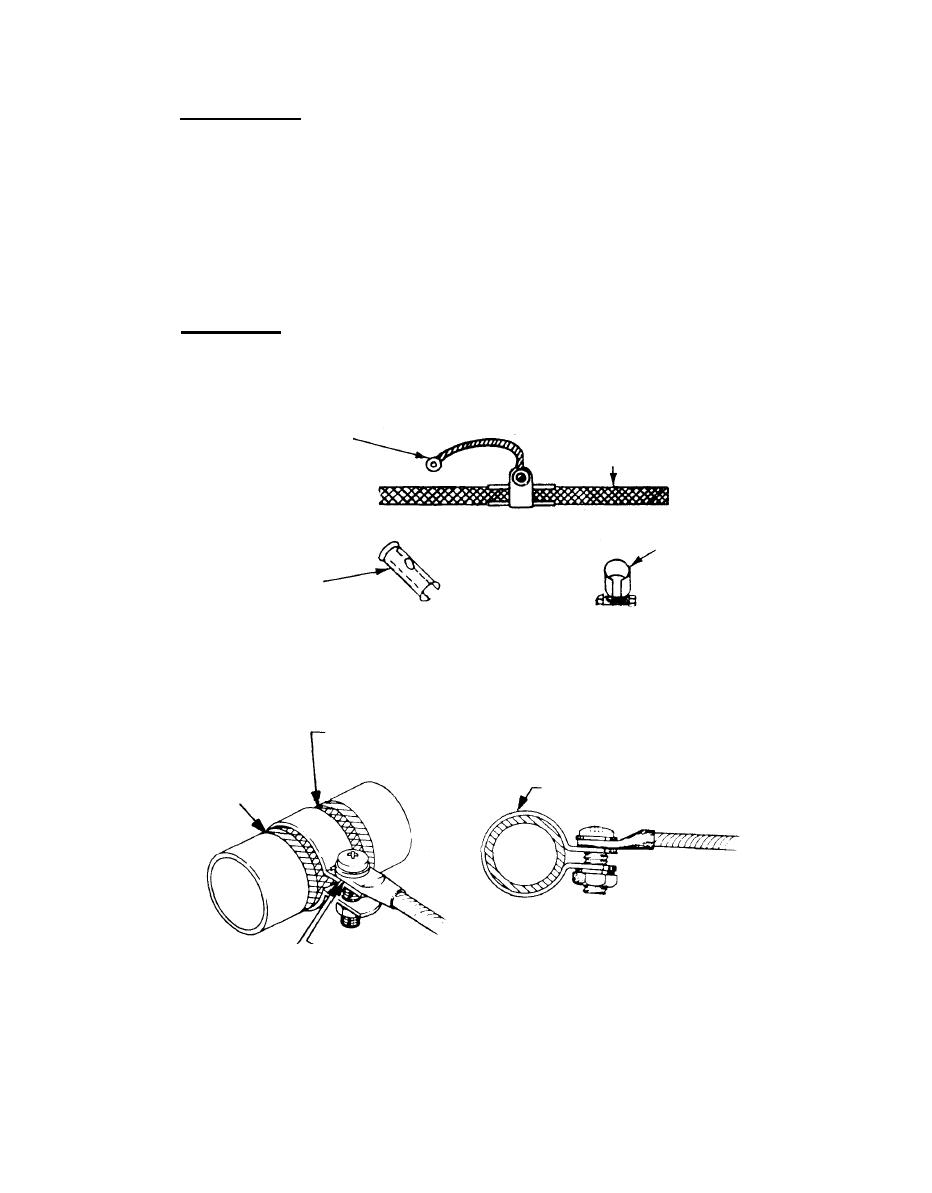

Custom Search
|
|

|
||
 MIL-HDBK-419A
1.7.4.2 Tubing and Conduit. Long spans of conduit should be properly bonded to the structure at both ends and
at several intermediate points. Ordinary clamps cannot be used to bond flexible conduit since the required
pressure on a comparatively small surface area may be sufficiently high to compress or collapse the conduit.
Instead of ordinary clamps, use a flared, split sleeve (Figure 1-73) fitted around the flexible conduit. This
sleeve distributes the high pressure of the bonding clamp over a large area, thereby exerting low pressure on the
conduit. Figure 1-74 illustrates a method for bonding to rigid conduit. With either type of clamp, the conduit
or tubing should be cleansed of paint and foreign material over the entire surface covered by the clamps. All
insulating finishes should be removed from the contact area before assembly, and anodized screws, nuts, and
washers should not be used to attach contacting parts.
1.7.4.3 Other Examples. Figures 1-75 through 1-80 illustrate recommended bonding methods appropriate for
most facilities.
BOND STRAP
FLEXIBLE TUBE
CLAMP
SLEEVE
Figure 1-73. Bonding to Flexible Cable and Conduit
CLEAN TO BASE METAL
INSIDE OF CLAMP AND
TO 1 CLAMP WIDTH
REFINISH AFTER INSTL.
CLAMP (MATERIAL: AS APPLICABLE TO TUBE)
1 DIA CLEANED AREA
BONDING OR CURRENT
RETURN JUMPER
CLEAN AREA OF CLAMP TAB THAT
SEAL AFTER INSTL
1 DIA CLEANED
TOUCHES TERMINAL TO BASIC
AREA
METAL
Figure 1-74. Bonding to Rigid Conduit
1-149
|
 |
|
 |
||